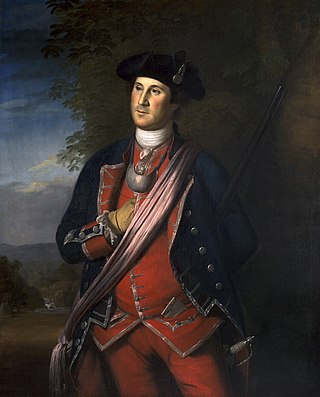
A gorget, from the French gorge meaning throat, was a band of linen wrapped around a woman's neck and head in the medieval period or the lower part of a simple chaperon hood. The term later described a steel or leather collar to protect the throat, a set of pieces of plate armour, or a single piece of plate armour hanging from the neck and covering the throat and chest. Later, particularly from the 18th century, the gorget became primarily ornamental, serving as a symbolic accessory on military uniforms, a use which has survived in some armies.

An aiguillette, also spelled aguillette, aiglet or aglet, is a cord with metal tips or lace tags, or the decorative tip itself.

A treasure binding or jewelled bookbinding is a luxurious book cover using metalwork in gold or silver, jewels, or ivory, perhaps in addition to more usual bookbinding material for book-covers such as leather, velvet, or other cloth. The actual bookbinding technique is the same as for other medieval books, with the folios, normally of vellum, stitched together and bound to wooden cover boards. The metal furnishings of the treasure binding are then fixed, normally by tacks, onto these boards. Treasure bindings appear to have existed from at least Late Antiquity, though there are no surviving examples from so early, and Early Medieval examples are very rare. They were less used by the end of the Middle Ages, but a few continued to be produced in the West even up to the present day, and many more in areas where Eastern Orthodoxy predominated. The bindings were mainly used on grand illuminated manuscripts, especially gospel books designed for the altar and use in church services, rather than study in the library.

Fashion in the period 1550–1600 in Western European clothing was characterized by increased opulence. Contrasting fabrics, slashes, embroidery, applied trims, and other forms of surface ornamentation remained prominent. The wide silhouette, conical for women with breadth at the hips and broadly square for men with width at the shoulders had reached its peak in the 1530s, and by mid-century a tall, narrow line with a V-lined waist was back in fashion. Sleeves and women's skirts then began to widen again, with emphasis at the shoulder that would continue into the next century. The characteristic garment of the period was the ruff, which began as a modest ruffle attached to the neckband of a shirt or smock and grew into a separate garment of fine linen, trimmed with lace, cutwork or embroidery, and shaped into crisp, precise folds with starch and heated irons.

Fashion in the years 1750–1775 in European countries and the colonial Americas was characterised by greater abundance, elaboration and intricacy in clothing designs, loved by the Rococo artistic trends of the period. The French and English styles of fashion were very different from one another. French style was defined by elaborate court dress, colourful and rich in decoration, worn by such iconic fashion figures as Marie Antoinette.
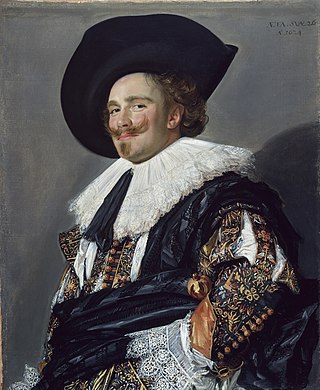
Fashion in the period 1600–1650 in Western European clothing is characterized by the disappearance of the ruff in favour of broad lace or linen collars. Waistlines rose through the period for both men and women. Other notable fashions included full, slashed sleeves and tall or broad hats with brims. For men, hose disappeared in favour of breeches.
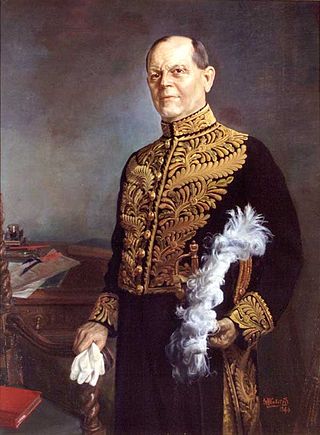
Court uniform and dress were required to be worn by those in attendance at the royal court in the 19th and early 20th centuries.

Fashion in the period 1650–1700 in Western European clothing is characterized by rapid change. The style of this era is known as Baroque. Following the end of the Thirty Years' War and the Restoration of England's Charles II, military influences in men's clothing were replaced by a brief period of decorative exuberance which then sobered into the coat, waistcoat and breeches costume that would reign for the next century and a half. In the normal cycle of fashion, the broad, high-waisted silhouette of the previous period was replaced by a long, lean line with a low waist for both men and women. This period also marked the rise of the periwig as an essential item of men's fashion.

A pelisse was originally a short fur-trimmed jacket which hussar light-cavalry soldiers from the 17th century onwards usually wore hanging loose over the left shoulder, ostensibly to prevent sword cuts. The name also came to refer to a fashionable style of woman's coat worn in the early-19th century.
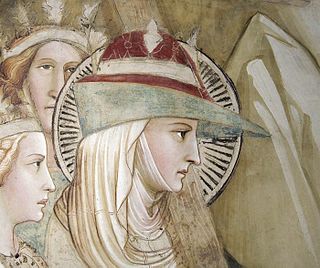
A bycocket or bycoket is a style of hat that was fashionable for both men and women in Western Europe from the 13th to the 16th century. It has a wide brim that is turned up in the back and pointed in the front like a bird's beak. In French, it is called a chapeau à bec due to this resemblance.

A nef is an extravagant table ornament and container used in the Middle Ages and Renaissance, made of precious metals in the shape of a ship – nef was another word for a carrack in French. If not just used for decoration, it could hold salt or spices, or cutlery, or even napkins. The large nef depicted in the well-known calendar miniature for January from the Très Riches Heures du Duc de Berry is being used to hold, and perhaps wash, gilt dishes from the table service.

Fashion in the period 1500–1550 in Western Europe is marked by very thick, big and voluminous clothing worn in an abundance of layers. Contrasting fabrics, slashes, embroidery, applied trims, and other forms of surface ornamentation became prominent. The tall, narrow lines of the late Medieval period were replaced with a wide silhouette, conical for women with breadth at the hips and broadly square for men with width at the shoulders. Sleeves were a center of attention, and were puffed, slashed, cuffed, and turned back to reveal contrasting linings.

The Armenian Taraz, also known as Armenian traditional clothing, reflects a rich cultural tradition. Wool and fur were utilized by the Armenians along with the cotton that was grown in the fertile valleys. During the Urartian period, silk imported from China was used by royalty. Later, the Armenians cultivated silkworms and produced their own silk.

Fashion in 15th-century Europe was characterized by a series of extremes and extravagances, from the voluminous robes called houppelandes with their sweeping floor-length sleeves to the revealing doublets and hose of Renaissance Italy. Hats, hoods, and other headdresses assumed increasing importance, and were draped, jeweled, and feathered.

Margaret Layton's jacket is a surviving example of English Jacobean embroidery, significant because it appears in a portrait which has also survived. The jacket was originally owned and worn by Margaret Layton (1579–1641), wife of Francis Layton (1577–1661) who was one of the Yeomen of the Jewel House during the reigns of James I, Charles I and, briefly, Charles II. Embroidered linen jackets were worn as informal dress, and were particularly popular among wealthy women in the late sixteenth and early seventeenth centuries. This jacket is exquisitely decorated with flowers, birds and butterflies, embroidered in coloured silks, coiled tendrils of silver-gilt plaited braid stitch and silver-gilt sequins. The edges of the jacket are trimmed with silver and silver-gilt bobbin lace and silver-gilt spangles.

English embroidery includes embroidery worked in England or by English people abroad from Anglo-Saxon times to the present day. The oldest surviving English embroideries include items from the early 10th century preserved in Durham Cathedral and the 11th century Bayeux Tapestry, if it was worked in England. The professional workshops of Medieval England created rich embroidery in metal thread and silk for ecclesiastical and secular uses. This style was called Opus Anglicanum or "English work", and was famous throughout Europe.
The Medieval period in England is usually classified as the time between the fall of the Roman Empire to the beginning of the Renaissance, roughly the years AD 410–1485. For various peoples living in England, the Anglo-Saxons, Anglo-Danes, Normans and Britons, clothing in the medieval era differed widely for men and women as well as for different classes in the social hierarchy. The general styles of Early medieval European dress were shared in England. In the later part of the period, men's clothing changed much more rapidly than women's styles. Clothes were very expensive and both the men and women of lower social classes continued also divided social classes by regulating the colors and styles these various ranks were permitted to wear. In the early Middle Ages, clothing was typically simple and, particularly in the case of lower-class peoples, served only basic utilitarian functions such as modesty and protection from the elements. As time went on the advent of more advanced textile techniques and increased international relations, clothing gradually got more and more intricate and elegant, even with those under the wealthy classes, up into the renaissance.

A dress hook is a decorative clothing accessory of the medieval and Tudor periods used to fasten outer garments or to drape up skirts. Made of base metal or precious silver and silver-gilt, dress hooks are documented in wills and inventories, and surviving hooks have been identified in the archaeological record throughout England.
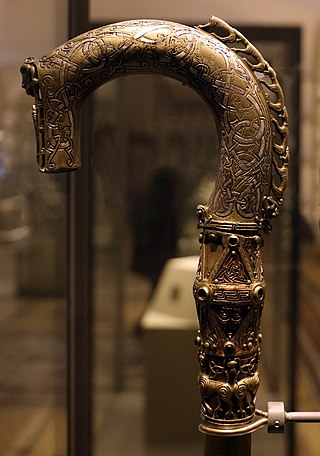
An Insular crozier is a type of processional bishop's staff (crozier) produced in Ireland and Scotland between 800 and 1200. Such items can be distinguished from mainland European types by their curved and open crooks, and drop. By the end of the 12th century, production of Irish croziers had largely ended, but examples continued to be reworked and added to throughout the Romanesque and Gothic periods. Although many of the croziers are associated with 5th- and 6th-century saints, the objects were not made until long after the saints had died. A majority originate from around the 9th century, and were often used as embellishment between the 11th and 13th centuries.
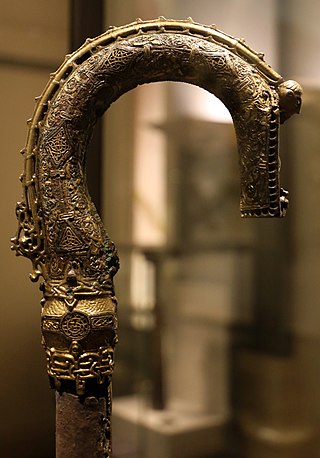
The River Laune Crozier is a late 11th-century Insular crozier, now at the Archaeology branch of the National Museum of Ireland. The object would have been commissioned as a staff of office for a senior clergyman, most likely a bishop. It consists of a wooden core decorated with fitted bronze and silver metal plates. Although the metalwork is somewhat corroded in parts, it is fully intact and considered one of the finest surviving Irish examples, alongside those found at Clonmacnoise and Lismore.






















